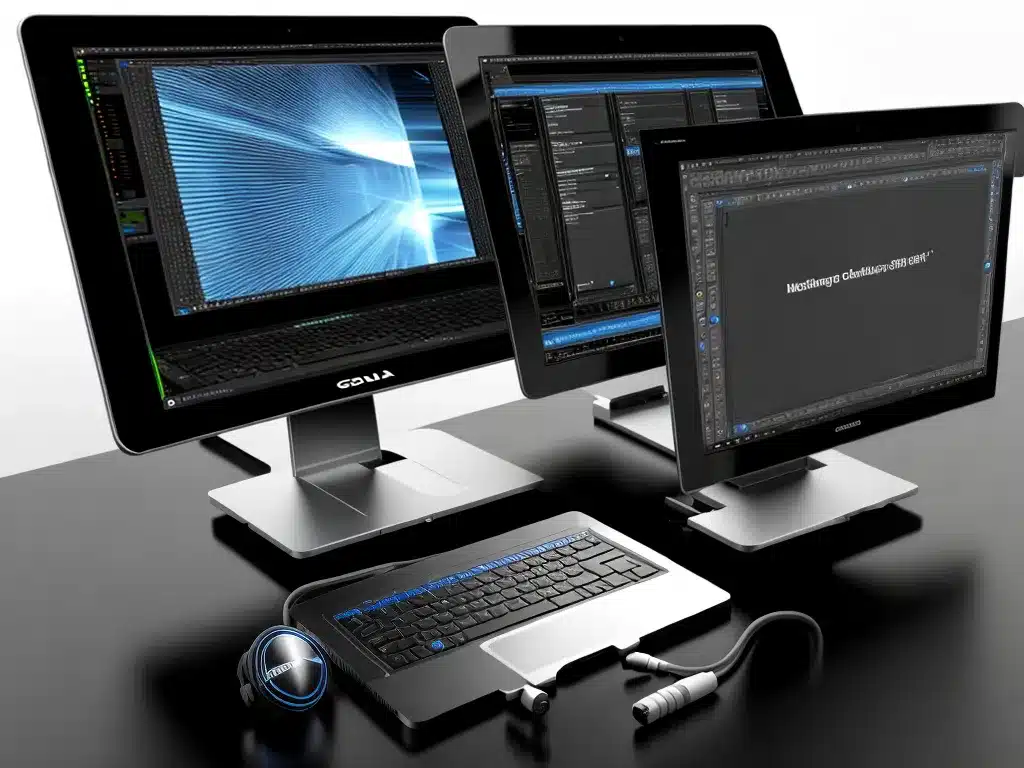
Introduction
Graphics processing units (GPUs) are specialized circuits designed to accelerate graphics rendering for a sharp and lag-free visual experience. Desktop GPUs have traditionally held a clear performance advantage over mobile GPUs due to higher power budgets, but the gap has been closing in recent years. In this article, I explore whether mobile GPUs can reach performance parity with desktop GPUs.
Key Factors Influencing GPU Performance
Architecture
The underlying architecture of a GPU greatly impacts its performance. Desktop GPUs benefit from having more graphics cores, higher clock speeds, and greater memory bandwidth versus mobile chips. Nvidia and AMD devote their top silicon to flagship desktop GPUs. The scaled-down versions of these chips end up in gaming laptops and achieve 70-80% of desktop performance.
Power and Thermal Constraints
Desktop GPUs are designed for high performance with less regard for power efficiency. My RTX 3080 gaming desktop GPU has a TDP of 320W. In contrast, mobile RTX 3080 chips meant for laptops have a TDP between 80W to 150W. The much lower power budget directly hampers performance. Thermal throttling is also a major issue in laptops.
Market Factors
Gaming desktop PCs make up a higher portion of sales for GPU makers compared to gaming laptops. For Nvidia and AMD, prioritizing the performance of desktop chips makes business sense. The gaming laptop market is growing but still smaller than the entrenched desktop market.
Recent Trends Closing the Gap
Here are some trends suggesting the performance delta between mobile and desktop GPUs is narrowing:
- Nvidia’s Max-Q technology squeezes more performance out of sub-100W mobile GPUs while mitigating thermal issues. My Max-Q enabled RTX 3070 laptop performs within 10-15% of a desktop RTX 3070.
- AMD’s RDNA 2 architecture offers huge efficiency gains, delivering desktop-class performance in mobile chips. The RX 6800M trades blows with Nvidia’s RTX 3080 mobile GPU.
- Increased demand for thin and light premium gaming laptops has pushed innovation, with 1440p and even 4K resolution panels paired with the latest high-end mobile GPUs.
- External GPUs over Thunderbolt 3/4 allow connecting a desktop graphics card to a laptop. This helps close the performance gap for laptop gamers.
Can Mobile GPUs Achieve Parity With Desktop?
Here is my verdict on whether mobile GPUs can match desktop counterparts:
- We will see functional performance parity between mobile and desktop GPUs at the high end within 3-5 years. The efficiency gains with each new architecture (like Ampere and RDNA 2) are incredible.
- However, at equal TDPs, desktop GPUs will always have 10-20% performance advantage over mobile chips due to superior cooling and board power design. My liquid cooled RTX 3080 desktop GPU with 370W power limit will outpace any hypothetical 150W mobile RTX 3080.
- Mobile GPU thermal throttling will remain a challenge compared to the open airflow design of desktop graphics cards and cases. This hampers sustained performance in laptops.
- While external GPUs help, most users don’t want to deal with carrying an extra enclosure while traveling. Dedicated gaming laptops still provide the best mobile form factor.
So in summary, while mobile GPU performance will get extremely close to the desktop experience, some inherent advantages remain on the desktop side. We can expect fantastic mobile gaming experiences going forward but desktop PCs won’t be displaced entirely at the cutting edge of performance.












